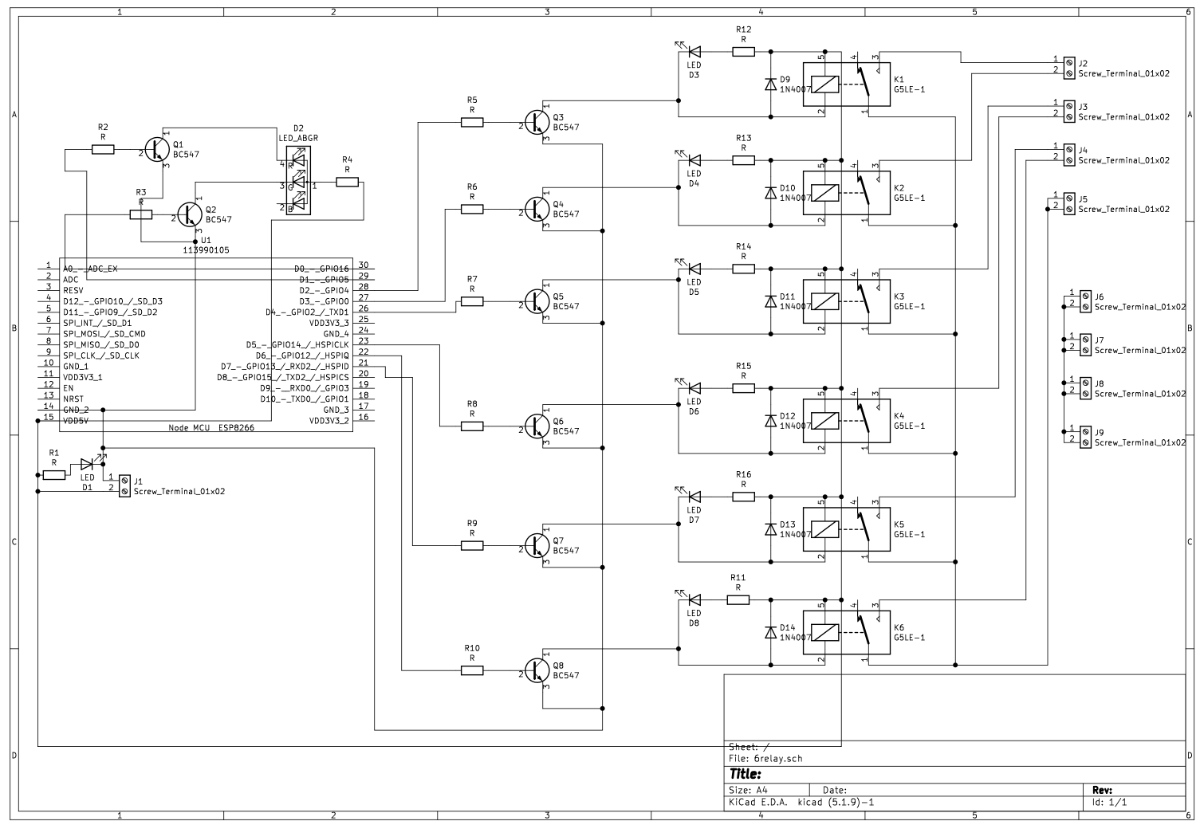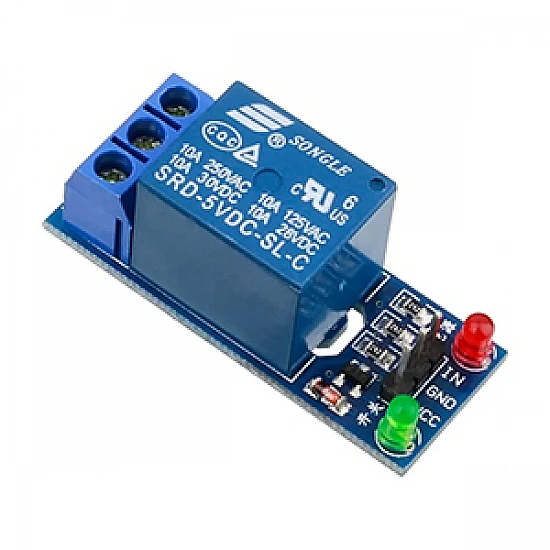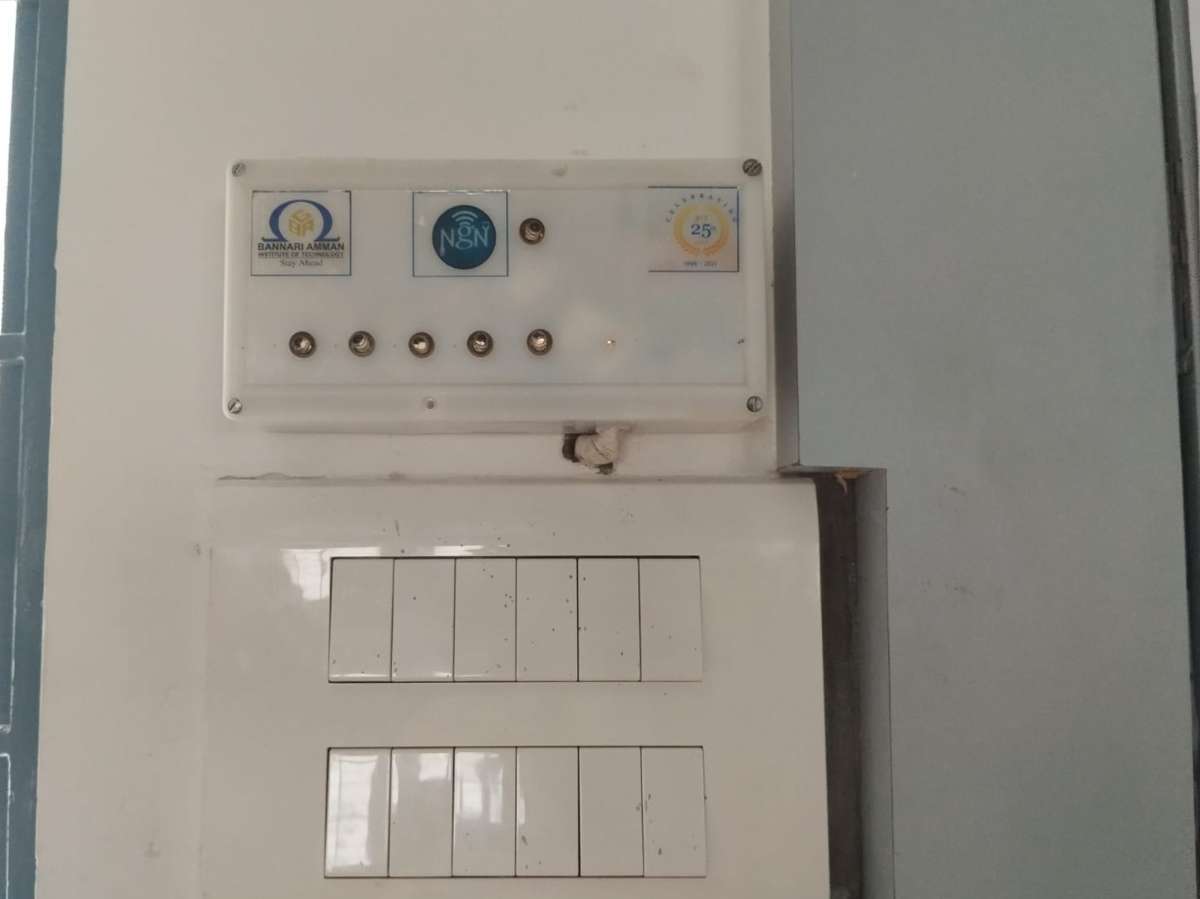Story
This project aims to develop a home automation system (HAS) leveraging wireless sensor networks (WSNs) and advanced computing devices.It utilizes an Android OS smartphone. Wi-Fi technology ensures precise, long-range connectivity, facilitating effortless device monitoring and control globally.
Home automation technology connects your devices and appliances for easy, but many IoT based Home Automation projects crash when the Internet speed goes down. With this project, we have build a system without the internet that can automate the Home.
Circuit Connection

In this project, we have used the NodeMCU Development Board for communication and to control of 5V relay, which controls AC loads with a personalized HTML page.
The system controls all the appliances in your room using your smartphone. Here we can control actual electrical appliances like water pumps, geysers, LED bulbs, Fans, etc. For providing a 5V supply to our project adopter is used. In our project additionally, we have included a timer module so that one of the appliances can be controlled based on the timer value we set in our smartphone.
With this project, we tried to build a system without the internet that can automate the Home. In this project, we have used NodeMCU
Development Board for communication & control of 5 AC loads connected to NodeMCU with personalised HTML page. The system controls
all your appliances in your room using your smartphone. You can add a relay module to control actual electrical appliances like water
pumps, geysers, LED bulbs, Fans, etc. For providing a 5V supply to our project adopter is used. In our project additionally we have included
a timer module so that one of the appliances can be controlled based on the timer value we set in our smart phone.

2. 5V RELAY: The 5V relay module is a versatile device used to control high voltage or high current loads through a low voltage 5V signal from an Arduino or other microcontroller. It enables the switching of various devices, including lights, fans, motors, and solenoids, by acting as an automatic switch.
The module features three high voltage terminals—Normally Closed (NC), Common (C), and Normally Open (NO)—for connecting to the device being controlled. On the low voltage side, it has three pins: Ground, VCC, and Signal, which interface with the micro controller.
This relay module operates by energizing a coil with DC voltage, which then opens or closes the contacts. A typical single-channel 5V relay includes a coil and two contact points (NO and NC).
It operates on a nominal voltage of 5V DC and a current of 70 mA. The relay can handle AC loads up to 10 A at 250 VAC or 125 VAC, and DC loads up to 10 A at 30 V DC or 28 V DC.
Enclosure
Constructed with a durable plastic material and featuring five pins, the relay module offers a rapid operating time of 10 milliseconds and a release time of 5 milliseconds.
It is capable of performing up to 300 switching operations per minute. Ideal for interfacing with various micro controllers, such as PIC and Arduino, this module is particularly useful in automatic control circuits and for managing high-current applications.
We have used 5 5-volt AC adapter to power the Controller circuit, it can deliver up to 2Amps current.

Local Server HTML PAGE
The HTML page linked with an ESP NodeMCU module local serves as a web-based interface for controlling and monitoring the NodeMCU.
It is accessible via a browser, it allows users to interact with connected devices—such as lights or sensors—through buttons and sliders.
The page also provides real-time data and status updates, enabling remote management and configuration of the IoT project with ease. The html webpage for the assigned IP address is programmed in the micro controller.
- Whoever in the same network using their smartphone can access the IP address and its
corresponding webpage.
- The protype can be accommodated with 11 devices. If there is a need can be extended up to n
number of devices.
.jpg)